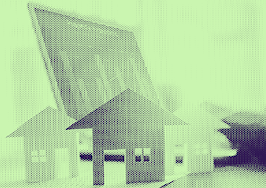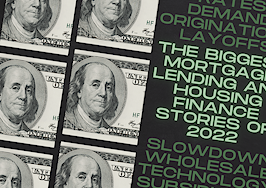New markets require new approaches and tactics. Experts and industry leaders take the stage at Inman Connect New York in January to help navigate the market shift — and prepare for the next one. Meet the moment and join us. Register here.
Foreclosure activity more than doubled in 2022 compared to the previous year but remained well below historical norms, according to Attom, a provider of information on virtually all properties nationwide.
The run-up in prices during the COVID-19 housing market gave borrowers so much equity that they’re fairly protected from bank repossessions, the report reads.
So while the nation continues moving away from the pandemic-era lows, it’s doing so very slowly and well below rates seen during the Great Recession.
“Foreclosure activity remains significantly lower than it was prior to the COVID-19 pandemic,” said Rick Sharga, executive vice president of market intelligence at Attom. “It seems clear that government and mortgage industry efforts during the pandemic, coupled with a strong economy, have helped prevent millions of unnecessary foreclosures.”
Just under 5 percent of the 8.4 million borrowers entered a federal forbearance protection program during the onset of the pandemic. Illinois, New Jersey and Delaware had the highest rate of foreclosures in 2022.
Foreclosure filings include notices of default on a mortgage, scheduled auction and bank repossession. Those took place on 324,237 properties last year, 115 percent higher than in 2021. It’s still down 34 percent compared to 2019 and down 89 percent from 2010, Attom said.
In 2010, foreclosure activity peaked with more than two out of every 100 homes at some stage of the foreclosure process, according to Attom. In 2022, two out of every 1,000 homes faced a foreclosure filing.
Bank repossessions grew by 67 percent in 2022 compared to a year earlier but remained 70 percent lower than in 2019.
The huge amounts of equity, nationwide, appears to help homeowners avoid foreclosure, Attom said.
“Unlike foreclosure activity during the Great Recession, the majority of homes in foreclosure are not being repossessed by lenders,” Sharga said. “Our recent homeowner equity report shows that 93 percent of borrowers in foreclosure today have positive equity, which they appear to be leveraging in order to avoid a foreclosure by refinancing their mortgage or selling the property at a profit. It seems likely that this is a trend that will continue in 2023.”
California saw the largest raw number of foreclosure starts in 2022, followed by Texas, Florida and Illinois. Five states — Indiana, Michigan, Idaho, Colorado and Minnesota — all saw foreclosure starts that were higher than in 2019.
Get Inman’s Property Portfolio Newsletter delivered right to your inbox. A weekly roundup of news that real estate investors need to stay on top, delivered every Tuesday. Click here to subscribe.













